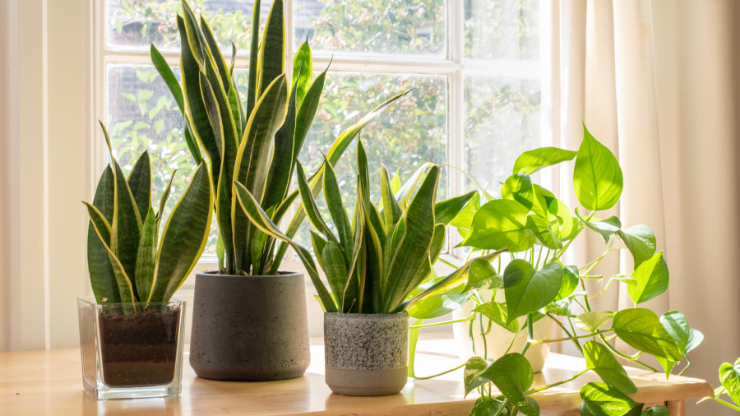
When I first started growing houseplants, I had what you might call a “black thumb.” I was terrible with them – or at least that’s what I thought. The truth is I was just inexperienced, and I started with plants that were too difficult for a beginner (except for my beloved pothos).
After two decades of learning from my own mistakes, I’ve finally figured out what it takes to grow all sorts of plants indoors. And in this post, I’m sharing the 19 best houseplants for black thumbs. The plants on this list are easy to grow and tolerant of mistakes.
If you feel like you’ve failed with houseplants, you might just have the wrong plants for your environment. Try one of these hard-to-kill varieties. You’ll be successful, get your confidence up, and soon you’ll be ready to move on to growing all sorts of greenery in your home.
Chinese Evergreen
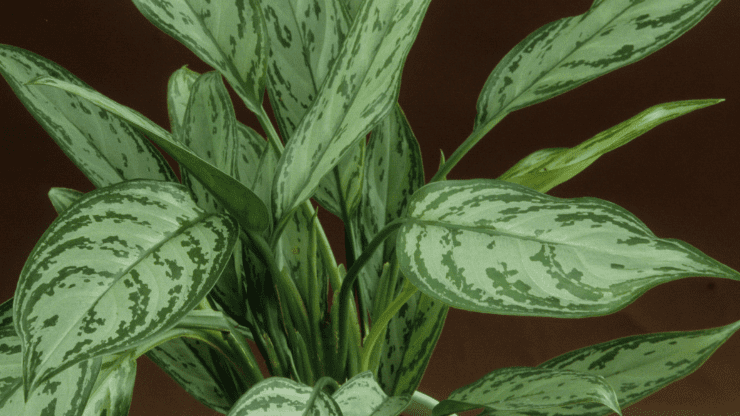
When I’m asked about the best houseplant for beginners, my answer is always Chinese Evergreen (Aglaonema). In my opinion, its tolerance of low light and slight neglect makes it the easiest plant for anyone to grow. If you’re just starting with houseplants, start here.
Caring for Chinese Evergreen is easy. As long as you water occasionally and provide moderate light, it will reward you with beautiful foliage for very little effort. It’s one of the few plants that can survive in a north-facing window, but it also grows great under artificial lights.
Pothos

Also known as Devil’s Ivy, Pothos (Epipremnum aureum) has a reputation for being the easiest houseplant to grow. I can confirm that reputation is well-deserved. Pothos was the first plant I ever grew successfully. It’s fast-growing, tolerant of neglect, and almost anyone can keep it alive.
Pothos care requirements are minimal. Water occasionally, give it bright filtered light (or artificial light), feed every two weeks during active growth, and you’ll have a beautiful foliage plant to enjoy for many years. Look for different varieties such as “pearls and jade” or “neon pothos.”
Snake Plant
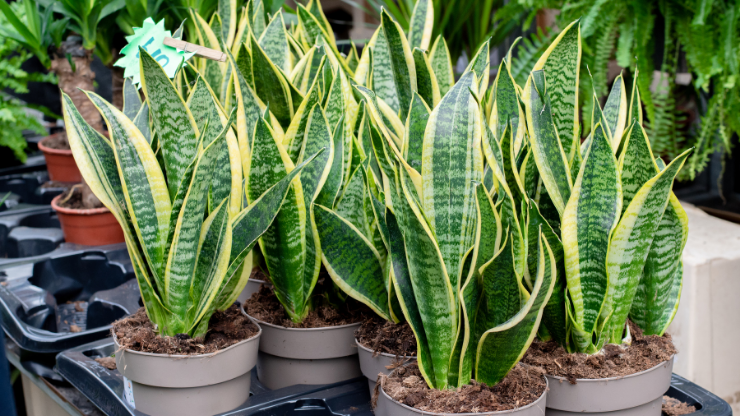
Another of my early successes, Snake plant is one of the best houseplants for black thumbs. It’s a succulent that can tolerate dry conditions (or a missed watering), but it can also handle low light conditions. You’ll often see this plant growing in office buildings due to its ease of care.
Snake plant is not very demanding when it comes to care. It will spring back to life even if you forget to water it for a few weeks or leave it in a dark room while you’re on vacation. It’s one of the hardest to kill houseplants. And if treated well, it produces beautiful, striking foliage.
Cast Iron Plant
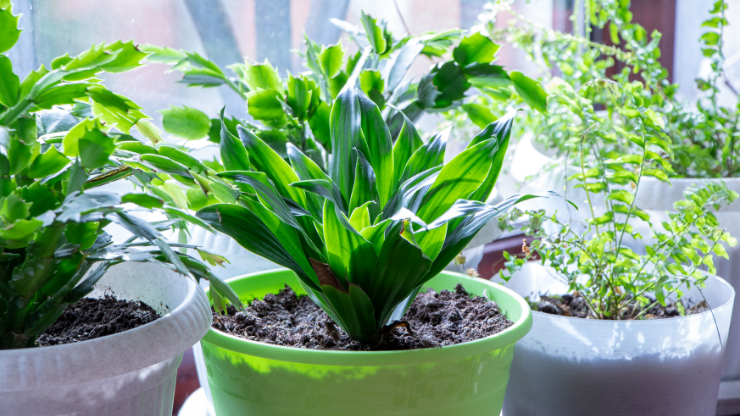
Cast Iron Plant (Aspidistra eliator) is so-named because of its toughness and strength – like cast iron. It can handle almost anything an inexperienced gardener can dish out. Low light, dry air, missed waterings, and this plant will still spring back. It can put up with a lot of neglect.
Although there are different varieties available, green-leaved aspidistras are the easiest to grow and least finicky. If you have a black thumb, avoid variegated or speckled types and stick with the classic green leaves. This plant can also thrive in low light from a north-facing window.
ZZ Plant
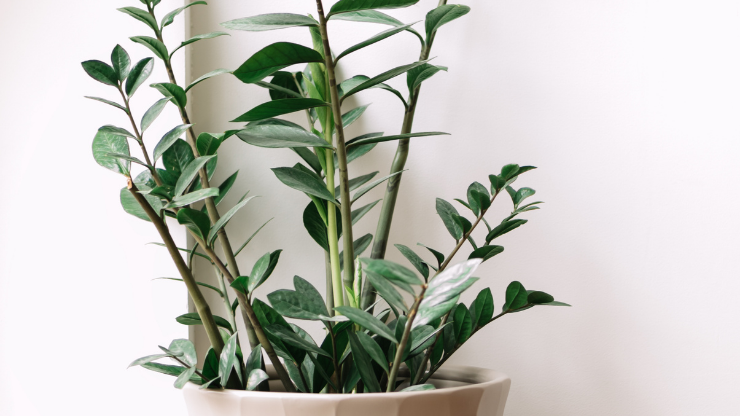
ZZ plant (Zamioculcas zamiifolia) is tough, low-maintenance, and easy to grow – everything a black thumb needs in a houseplant. Not to mention, it produces attractive evergreen foliage with a crown of glossy, thick, leathery green leaves arching gracefully out from soil level.
Due to ZZ plant’s minimal care requirement, you’ll often see it growing in office buildings under fluorescent lights. However, it also makes a fantastic house plant. It can live in the bright light of a north-facing window, tolerates dry air very well, and can dry out between waterings.
Corn Plant
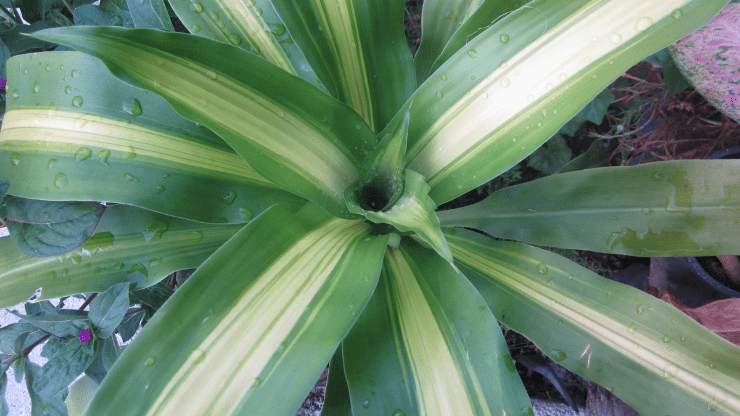
Corn Plant (Dracaena fragrans) is an easy-to-grow houseplant with beautiful, strappy green leaves similar to those of cast iron plant. However, corn plant leaves are produced in a rosette atop two or three slender trunks. And when fully grown, it reaches up to 8 feet (2.4 meters) high!
I consider corn plant one of the best indoor trees for low light. It’s also perfect for black thumbs, as it can tolerate a wide range of light, temperature, and moisture conditions. Corn plant’s care requirements are undemanding, and you’ll often see this plant growing in offices and hospitals.
Dragon Tree
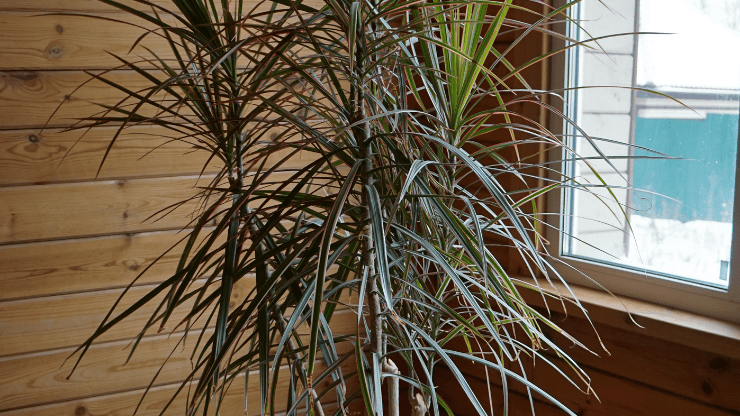
Dragon tree (Dracaena marginata) is another of the best houseplants for black thumbs – and one of my personal favorites. Not only is this plant easy to obtain and relatively inexpensive for a large “tree,” it’s also super easy to care for in most household conditions.
Dragon tree care includes moderate to bright light, keeping the soil lightly moist, and feeding a few times during the growing season. This hardy houseplant also tolerates neglect, such as underwatering. It may drop leaves if unhappy, but it’s quick to bounce back with proper care.
Peace Lily
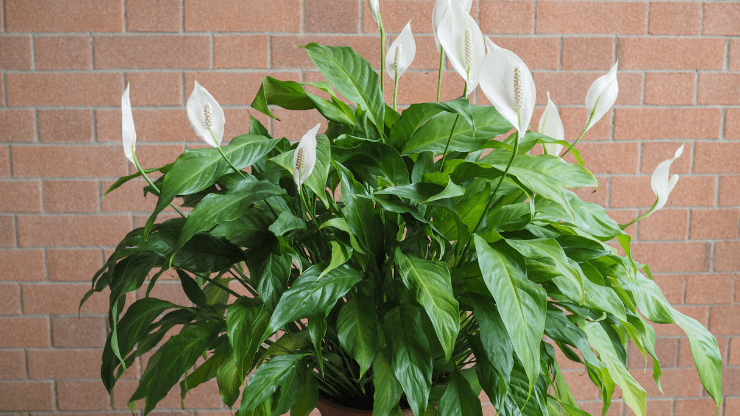
Peace lily (Spathiphyllum spp.) is one of the best flowers for black thumbs. It’s one of the only flowering houseplants that can tolerate low light. It produces beautiful “flowers” consisting of delicate leaf-like spathes surrounding an upright spadix covered with tiny white flowers.
Not only is the plant attractive – when it comes to both foliage and flowers – it’s also super easy to grow under most conditions. Peace lily requires low to bright light, occasional watering when the top 1 inch (2.5 cm) soil dries out, and regular misting with a spray bottle.
Umbrella Tree
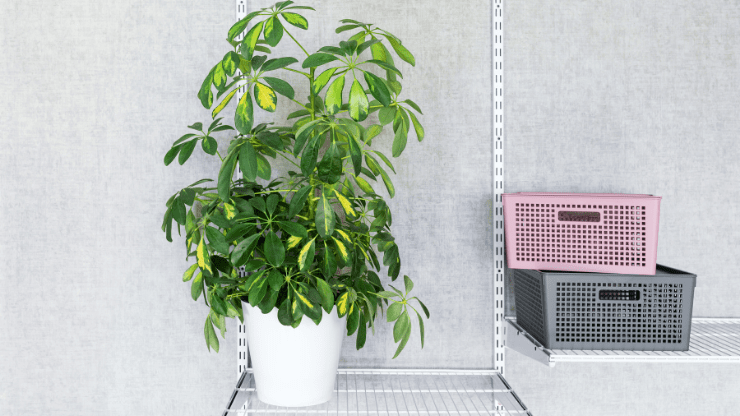
Umbrella tree (Schefflera spp.) is another of the best houseplants for black thumbs. It’s easy to grow, produces beautiful green or variegated foliage, and non-dwarf varieties become quite large indoors – up to 8 feet (2.4 meters) high. It makes a nice statement in an empty corner.
This plant comes in several different varieties including the original (Schefflera actinophylla), dwarf umbrella tree (Schefflera arboricola) and Australian Umbrella tree (Schefflera amate). I have a Schefflera amate and it’s basically indestructible. With bright filtered light, it can put up with almost anything. Just water when it starts to droop or it may lose leaves!
Lady Palm

Lady Palm (Rhapis excelsa) is the first palm tree on our list of best houseplants for black thumbs. Some indoor palms can be finicky, but not lady palm. This plant is easy to grow, tolerates poor light and neglect, and has minimal care requirements.
A staple in malls and office buildings, you’ve probably seen Lady Palm thriving in all sorts of environments. It makes an excellent houseplant if you can provide low to medium light, and a little extra humidity (by misting or using a humidifier). Otherwise, Lady Palm is very forgiving.
Philodendron Birkin

Philodendron birkin is a relatively new and trendy houseplant that’s quite easy to grow. It’s perfect for beginners or houseplant growers with a record of killing their plants. Prized for its beautiful foliage and ease of care, it makes a great tabletop plant for any room.
Philodendron birkin care requirements are simple – give it medium to bright indirect light, allow the soil to dry out between waterings, and feed monthly in spring through summer. It appreciates moderate humidity, but grows well in most homes if you mist it a few times a week.
Heart-Leaf Philodendron
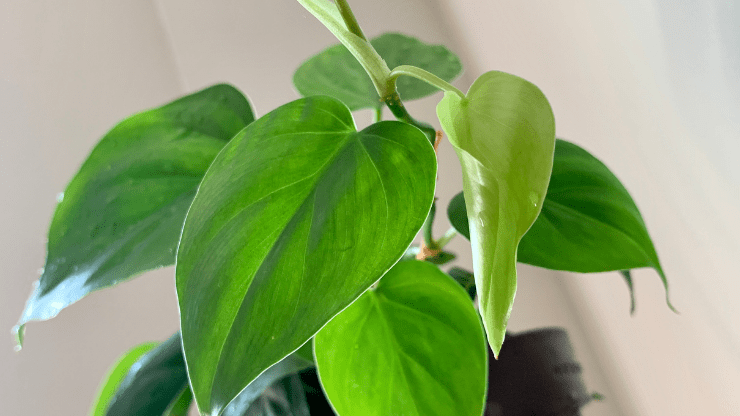
Heart-leaf philodendrons are classic houseplants beloved by indoor gardeners for decades – and with good reason! They are incredibly easy to grow and produce heart-shaped leaves that climb or trail attractively out of their containers. They’re good for hanging baskets or trellising.
Black thumbs will love growing this plant due to its ease of care and fast growth. Provide bright filtered light, water when the top 1 inch (2.5 cm) of soil dries out, and mist frequently using tepid water. Otherwise, heart-leaf philodendron is quite forgiving of most mistakes.
Grape Ivy
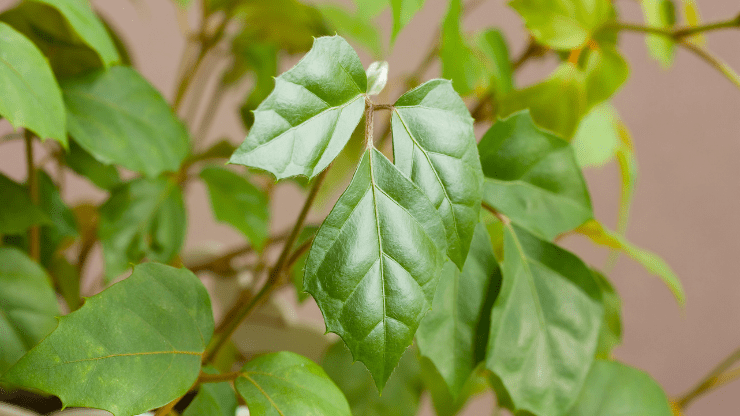
Grape ivy (Cissus rhombifolia) is easy to grow in most homes. It’s an evergreen vine with curling tendrils that easily cling to a stake or trellis, or climb down furniture. You can keep them small and bushy, if you prefer, by pinching out the growing tips and forcing side branches to grow.
Grape ivy is also one of the best houseplants for black thumbs. It simply requires bright filtered light (or artificial light), warm temperatures, and ample watering during the growing season. It likes lots of moisture, so increase humidity near the plant if possible.
Rubber Tree
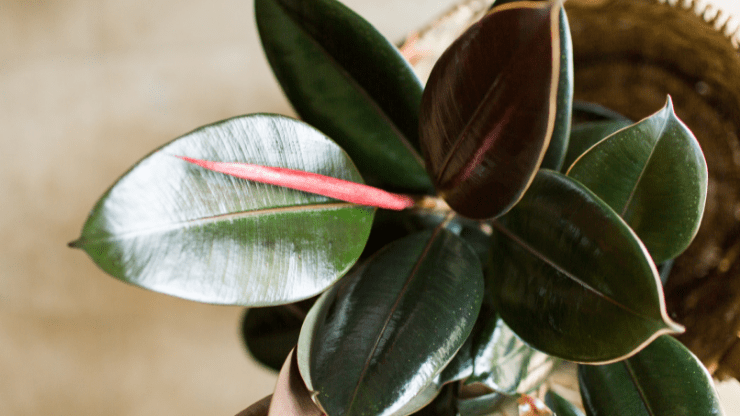
Rubber tree (Ficus elastica) is a real tree that does indeed produce rubber. However, it’s actually a type of fig. And when grown as a houseplant, it’s prized for its smooth, glossy, oval-shaped leaves. It grows slowly without proper light and warmth, but it takes a lot to kill this hardy tree.
Care requirements for rubber tree are minimal. It needs bright to moderate indirect light, moderate water, and moderate humidity. Mist a few times a week and water any time the top half-inch of soil dries out. Rubber tree grows more quickly if conditions are optimal.
Wandering Jew
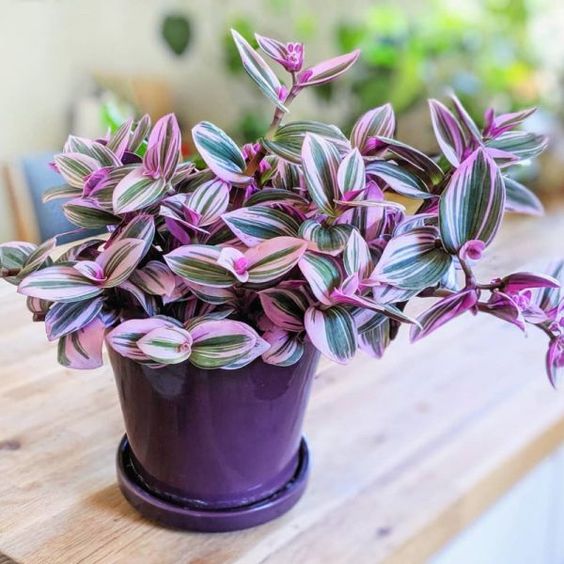
Wandering Jew (Tradescantia) is a beautiful trailing houseplant named for its “wandering” habit – just as the Israelites wandered the desert for 40 years after their exodus from Egypt. There are several different varieties available. My favorite is Tradescantia pallida “Purpurea,” which produces violet leaves and bright pink flowers.
As a houseplant, wandering Jew is easy to grow. It’s drought-tolerant and doesn’t require misting or any other measures to increase humidity. It simply needs bright filtered light, moderate water (when the top 1 inch of soil dries out), and normal household temperatures.
Monstera
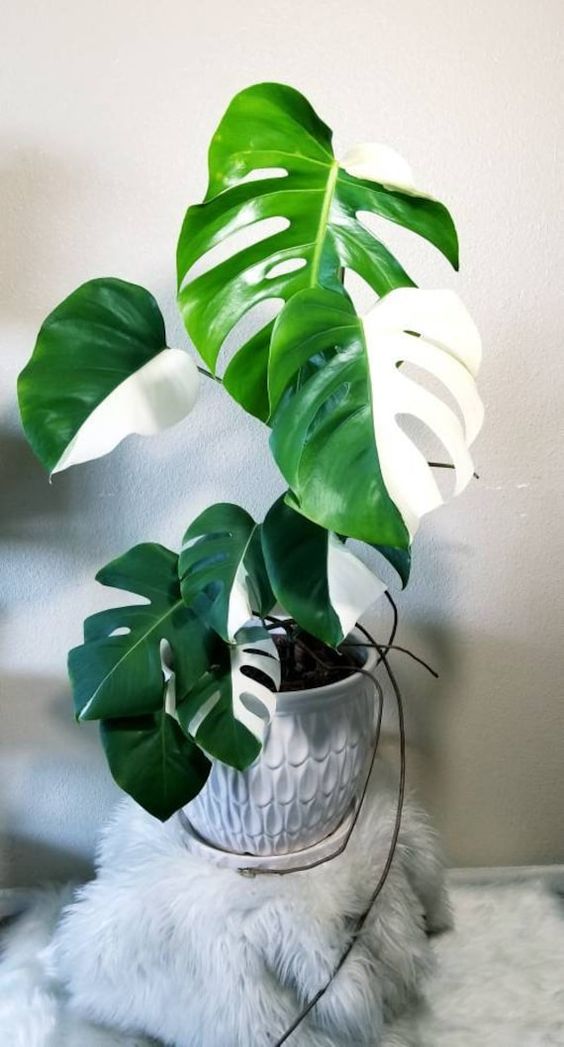
Monstera deliciosa is also known as split-leaf philodendron or Swiss cheese plant due to the slits and holes that form in its leaves. This popular tropical houseplant gets absolutely HUGE indoors – reaching heights of up to 8 feet (2.4 meters) over several years.
Not only does Monstera have strikingly beautiful foliage, it’s also surprisingly easy to grow. Provide bright filtered light, water when the top 1 inch (2.5 cm) of soil dries out, and keep temperatures warm. You’ll also need to stake the plant as it grows to support the heavy stems.
Parlor Palm
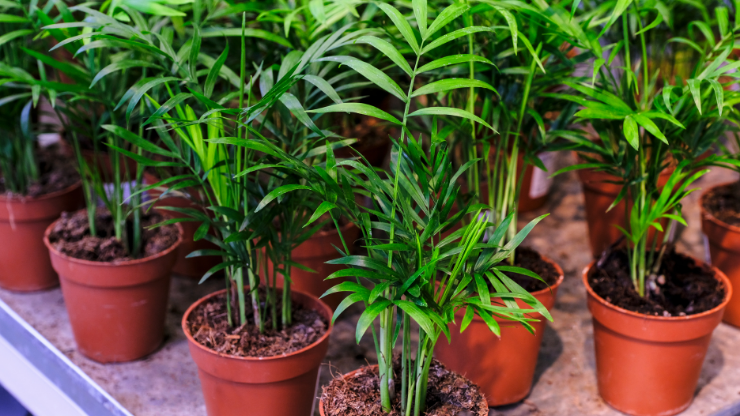
Parlor palm (Chamaedorea elegans) is the most popular and widely-grown indoor palm tree in the world. It’s beautiful, elegant, and most importantly – one of the best houseplants for black thumbs. These lovely palms rose to popularity in the Victorian era and remain in demand today.
Indoors, parlor palm grows quite slowly, reaching about 4 feet (1.2 meters) in height at the most. Care requirements are minimal, as with all the plants on this list. They tolerate low light conditions (though they prefer bright indirect light), and only need moderate water and humidity.
Peperomia
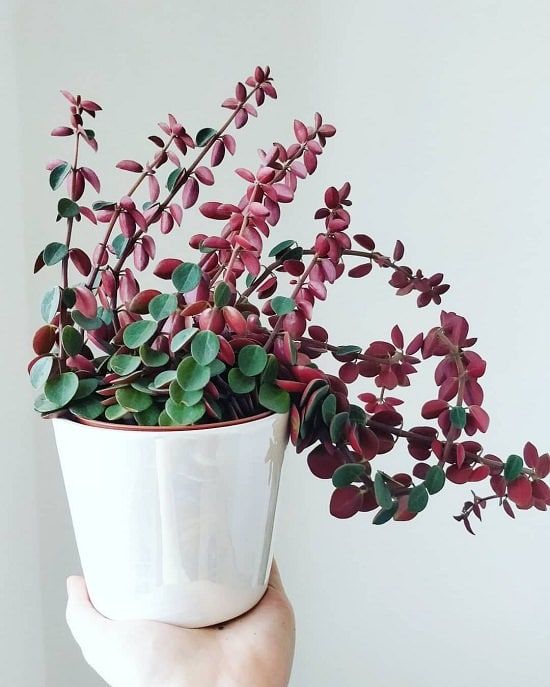
Peperomia, also known as baby rubber plant or radiator plant, is beloved for its attractive, unique foliage that comes in many different colors (depending on variety). This easy-care houseplant is quietly undemanding, needing only basic care to thrive indoors.
Small and compact, peperomia makes a great tabletop or windowsill plant. It reaches only 12 inches (30 cm) tall and wide. Provide bright filtered light or artificial light, warm temperatures, and ample water – and you’ll be rewarded with beautiful foliage for years to come.
Arrowhead Plant

Arrowhead plant is one of my favorite houseplants and another of the best houseplants for black thumbs. It’s easy to grow, low maintenance, and produces beautiful arrowhead-shaped leaves. It’s especially lovely in hanging baskets, where it can trail attractively over the side of its pot.
Many different cultivars are available, and they’re all equally easy to grow. Give them bright indirect light, warm temperatures, moderate water, and regular misting to keep humidity high. Although rare, it’s possible for arrowhead plant to flower indoors.